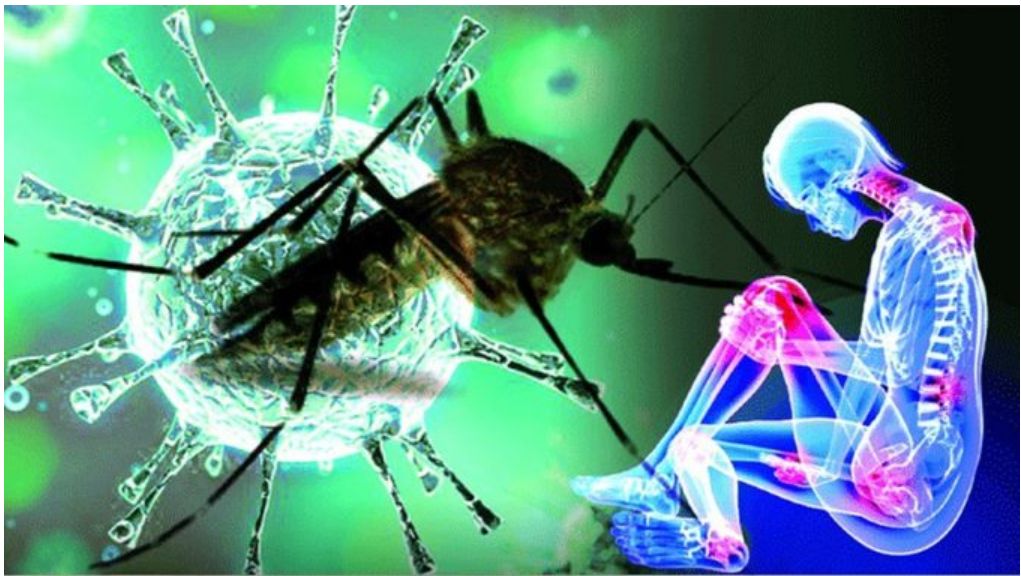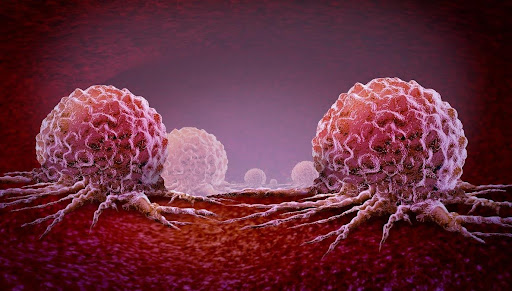
Chikungunya: A Vector Borne Disease
Key Factors:
- Chikungunya is a viral infection transmitted to humans by two mosquito species, Aedes aegypti and Aedes albopictus, in Africa, Asia, and the Americas; sporadic outbreaks have been reported in other regions.
- A multidisciplinary effort has been made over the past five years to scientifically characterise these viruses’ causing symptoms like dengue and Zika.
- Additionally, to a high temperature and excruciating joint pain, chikungunya can also produce rash, joint swelling, muscle soreness, headaches, nausea, and exhaustion.
- Presently, there is no approved vaccine or specific treatment available for chikungunya virus infections.
- Due to the difficulty in diagnosis, the number of people affected with chikungunya is less reported.
- Chikungunya is a rare disease with severe symptoms and fatalities that are typically related with other coexisting medical conditions.
Introduction
Tanzania was the first to report an outbreak of the vector-borne tropical disease chikungunya fever. The disease is caused by the Chikungunya virus (CHIKV), an alphavirus from the Togaviridae family that spreads from person to person through mosquito bites. The symptoms of active disease include high-grade fever, discomfort, and joint issues. Aedes aegypti and Aedes albopictus are the two main mosquito species that transmit CHIKV to people, although the disease can also be spread by other species of mosquitoes.
Severe infection-related deaths are uncommon, and when they do occur, they are typically caused by other underlying medical disorders. The name "Chikungunya" for the disease, which in the Makonde dialect means "to be deformed or bent," was derived from the fact that people with an active infection may experience crippling joint pain, giving them a distinctively curved or bent posture.
Despite being a global disease, chikungunya fever is particularly prevalent in Africa. In terms of how infected patients show clinical symptoms, the disease is comparable to a number of other febrile viral infections, making it susceptible to misdiagnosis in areas where there are inadequacies in laboratory setups and testing procedures. It was clinically similar to dengue fever, even when it was initially identified as a disease in Tanzania. As a result, there are discrepancies in the number of Chikungunya infections reported from different setups, and in many cases, it is nearly impossible to get an accurate estimation of the infection's prevalence.
There are currently no commercially available vaccinations or specific medications to treat Chikungunya fever, and available treatments often provide symptomatic relief. A lot of research has been done over the years in an effort to find specific drug candidates and vaccinations that will target the causative agent, but as of yet, no single entity has been made available to the world. Improving infection prevention strategies, targeting everything from vector management to preventing mosquito bites and contracting an infection, is the most successful intervention the world has been working on.
Pathogenesis
There are about 30 members of the genus Alphavirus, which probably diverged a few thousand years ago. While some alphaviruses are not harmful to people, others are quite contagious and can cause mild to severe clinical symptoms. Both new-world and old-world viruses can be classified as alphaviruses. These two categories differ in their pathogenicity, tissue and cellular tropism, cytotoxicity, and interference with virus-induced immune responses.
They have also evolved diverse ways of interacting with their respective hosts. Although the evolutionary constraints driving viral diversity may be related to their true host species, it should be remembered that the majority of alphavirus infections in humans and domesticated animals are regarded as "dead ends," meaning the virus cannot be transmitted to a new host.
Other zoonotic viral reservoirs for CHIKV have not been thoroughly investigated. From a clinical perspective, the two types of alphaviruses are separated into those associated with polyarthritis and a rash (mostly old-world viruses) and those further associated with encephalitis (mostly new-world viruses).
Although CHIKV is an arthritogenic alphavirus, there were documented occurrences of meningoencephalitis (mainly in newborns) and hemorrhagic disease during the most recent outbreak, demonstrating that these symptoms are significant aftereffects of acute CHIKV infection. CHIKV appears to infect the stromal cells of the central nervous system, namely the lining of the choroid plexus, in contrast to conventional encephalogenic alphaviruses, which often infect neurons.
Aedes aegypti or Aedes albopictus bites carry the CHIKV virus, while in the most current epidemic, some cases were brought on through maternal-fetal transmission. CHIKV multiplies in the skin after transmission and subsequently spreads to the liver and joints, most likely via the blood. There is no prodromal phase, and a fast onset of clinical disease occurs after the incubation period of 2-4 days.
High fever, rigors, headache, photophobia, and a petechial rash or maculopapular rash are all signs of a CHIKV infection. Additionally, the majority of chikungunya patients report severe joint pain that is frequently incapacitating. Silent infections (infections without illness) do occur but are rare, being observed in around 15% of infected individuals. Strikingly, during the acute phase, the viral load can reach 108 viral particles per ml of blood, and the plasma concentration of type I interferons (IFNs) is in the range of 0.5–2 ng per ml, accompanied by robust induction of other pro-inflammatory cytokines and chemokines.
Although rare, silent infections (infections without symptoms) sometimes happen and are observed in around 15% of infected individuals. Surprisingly, during the acute phase, the viral load can reach 108 viral particles per ml of blood, and the plasma concentration of type I interferons (IFNs) is in the range of 0.5–2 ng per ml, accompanied by robust induction of other pro-inflammatory cytokines and chemokines. Typically, the acute phase of a CHIKV infection lasts a few days to a few weeks.
The chronic phase of the disease has not been thoroughly studied, in contrast to the acute phase. Recurrent joint pain, which can last for years in some cases, is experienced by 30–40% of those infected, although this is not thought to be a result of chronic infection as infectious viruses cannot be isolated from these patients. The majority of the time, radiographic scans are normal or only slightly swollen, which is consistent with joint pain. According to some theories, this joint pain is immune-mediated, just like the discomfort brought on by the related alphavirus Ross River virus (RRV).
Introduction of New Drugs and Vaccines
Like many other bacterial, viral, or fungal infectious diseases, chikungunya fever has drawn the attention of numerous researchers who are looking for novel pharmacological treatments and vaccines. Despite the fact that a lot of work has been put forth thus far, no antiviral has yet been demonstrated to be specifically effective against CHIKV and safe for use in humans. Furthermore, no vaccination has been made accessible for human use. However, it is important to consider the trends in the development of more recent chikungunya medications and vaccines as well as to examine the various methods used in their research.
Antiviral Agents
An antiviral agent is a substance that directly targets a virus and causes viral particles to be disrupted, viral replication to be stopped, and/or viral clearance to be accelerated through immunological mechanisms. Many trials have been run in search of a safe and powerful antiviral medication that precisely combats the chikungunya virus. The candidates undergoing testing in the various trials are diverse and attack CHIKV in diverse ways. Small CHIKV inhibitor compounds and naturally occurring viral replication inhibitors are among the study's agents. Repurposed medications, monoclonal antibodies, gene silencers, and viral particles are some examples of substances that largely or entirely modulate the immune system. More than 30 antiviral drugs reported to be effective against CHIKV were patented in the previous ten years.
CHIKV Inhibitors
Small inhibitor molecules, inhibitors from natural sources, repurposed pharmaceuticals, and other substances are included in the category of CHIKV inhibitors. These medications prevent the replication of CHIKV by various biochemical pathways. This category includes a large number of compounds that are being explored, the majority of which are still in the early phases of drug development. Examples of the several medications that fall under this category include ribavirin, arbidol, chloroquine, epigallocatechin gallate (EGCG), and ribostamycin sulphate.
CHIKV inhibitors work to counteract viruses through a number of mechanisms. The majority of these agents prevent viral replication. They obstruct a number of viral replication processes, including gene transcription, viral particle assembly into virions, and viral budding out of the host cell. The immune responses are thought to remove viruses with the help of other medicines. None of these agents has fully gone through the entire drug development process, and thus none are available on the market.
Monoclonal Antibodies
Over the past few decades, using monoclonal antibodies to treat a variety of infectious and non-infectious disorders has proven to be a very effective method. Monoclonal antibodies are a simplified mode of passive vaccinations because they function to directly penetrate virus particles. Numerous tests have been conducted on medications that are being developed as monoclonal antibodies to combat CHIKV. The development of a vaccine as a treatment may be facilitated by the introduction of antibodies that are efficient against the CHIKV proteins.
During the early stages of a CHIKV infection, these molecules that take advantage of the host immune system induce different immune modulators, such as type I interferons and antibodies. These agents, which rely on the host's immune system, activate a variety of immune modulators, including type I interferons and antibodies in the early stages of a CHIKV infection, immunoglobulin M (IgM) antibodies in the acute phase, and immunoglobulin G (IgG) antibodies in the case of infections that last longer. By preventing CHIKV from emerging from infected host cells, neutralizing antibodies can obstruct the viral release from the host stage of replication.
In this prospect, the use of monoclonal antibodies appears to be a very promising strategy for the quick development of novel antiviral therapies for chikungunya.
Vaccines
Although vaccines play a larger role in preventing the acquisition of active diseases in general and in theory, their use as therapeutic agents has become a widely used strategy, particularly in the core of passive immunization, where recipients are given readily made antibodies that directly neutralize the causative agent. Various initiatives have been developed in the last ten years to produce effective vaccines for the treatment of CHIKV infections in the field of developing anti-Chikungunya vaccines. Inactivated virus vaccines, recombinant viral component vaccines, DNA and mRNA-based vaccines, synthetic vaccines, subunit formulations of CHIKV, and other vaccines have all been developed.
Passive Immunization
The term "passive immunization" against the CHIKV refers to the administration of already-formed antibodies that combat the virus directly. The previous section, which presents monoclonal antibodies as therapeutic antiviral drugs, briefly discusses this. The humoral memory host response and the existence of neutralizing antibodies that target the virus's outer surfaces of envelope glycoproteins are the main mechanisms by which humans are protected from CHIKV infection. Studies have shown that monoclonal antibodies are effective against CHIKV infections when used as post-exposure therapy. As a result, the introduction of passive vaccination appears to be another possibility for the introduction of successful interventions against chikungunya in the future.
Active Immunization
In order to trigger an immune response, elicit an immune response, and develop a memory against the foreign agent, active immunization uses the body's introduction of an antigen. It is regarded as the most economically advantageous preventative healthcare measure to date. The development of a CHIKV vaccine appears feasible as it has a relatively low antigen diversity in comparison to other closely related viruses. Because of the low rate of virus mutation and changes in vaccination effectiveness profiles, if an effective vaccine is made available, is less likely to occur.
Up until 2016, three investigational vaccines had reached the point of being tested on humans. In 2014 and 2015, respectively, two candidates—the VRC-CHKV133 and MVCHIK127 vaccines—completed phase I of development. A phase I trial is scheduled for the third candidate (the CHIKV/IRES115 vaccine), which showed encouraging efficacy and safety outcomes in mice and macaques. One candidate has advanced to phase three trials in 2021; it is important to mention this.
Chikungunya has long been a focus for medicine and vaccine development firms, and clinical trials for treatments and vaccinations against this viral disease appear to be progressing well in terms of their current status and future prospects. A few novel drugs and vaccine candidates have advanced to human testing, while numerous additional studies using animal models are now being conducted. Many antiviral medicines have progressed to the final phases of the drug development process.
These entities can be small molecules, substances derived from the natural world, or macromolecules like monoclonal antibodies. On the other side, several vaccines have also been in development, and thus far, one candidate has made it to phase 3 clinical trials, proving acceptable safety and efficacy. Given the severity and incapacitating nature of Chikungunya fever, the pursuit of novel treatments and prevention measures such as immunizations is unavoidable.
As their name suggests, neglected tropical diseases have long been neglected in an effort to focus policy and resource allocations on diseases that are deemed to pose the greatest threat to public health. Despite the fact that chikungunya fever is a neglected tropical disease, the majority of research done in this field is laudable, and current trends suggest that a new therapeutic option may soon be available.
We, BTL Biotechnolabs Pvt. Ltd. being a channel partner of Fitzgerald Industries International offer a wide range of Chikungunya virus product, including antibodies, specific recombinant proteins, peptide pools, Nucleocapsid protein, Spike proteins, Envelope protein, ELISA kits, rapid PCR kits, and many more.
We also provide custom services according to the experimental research design.
Fitzgerald Industries International is a global supplier of antibodies, proteins and ELISA kits with 25 years of expertise in serving research and diagnostic customers.
For more details, please follow the below link:
https://biotechnolabs.com/products
https://fitzgerald-fii.com/catalogsearch/result/index/?applications=81&q=chikungunya
For product details, please connect with us at info@biotechnolabs.com.








